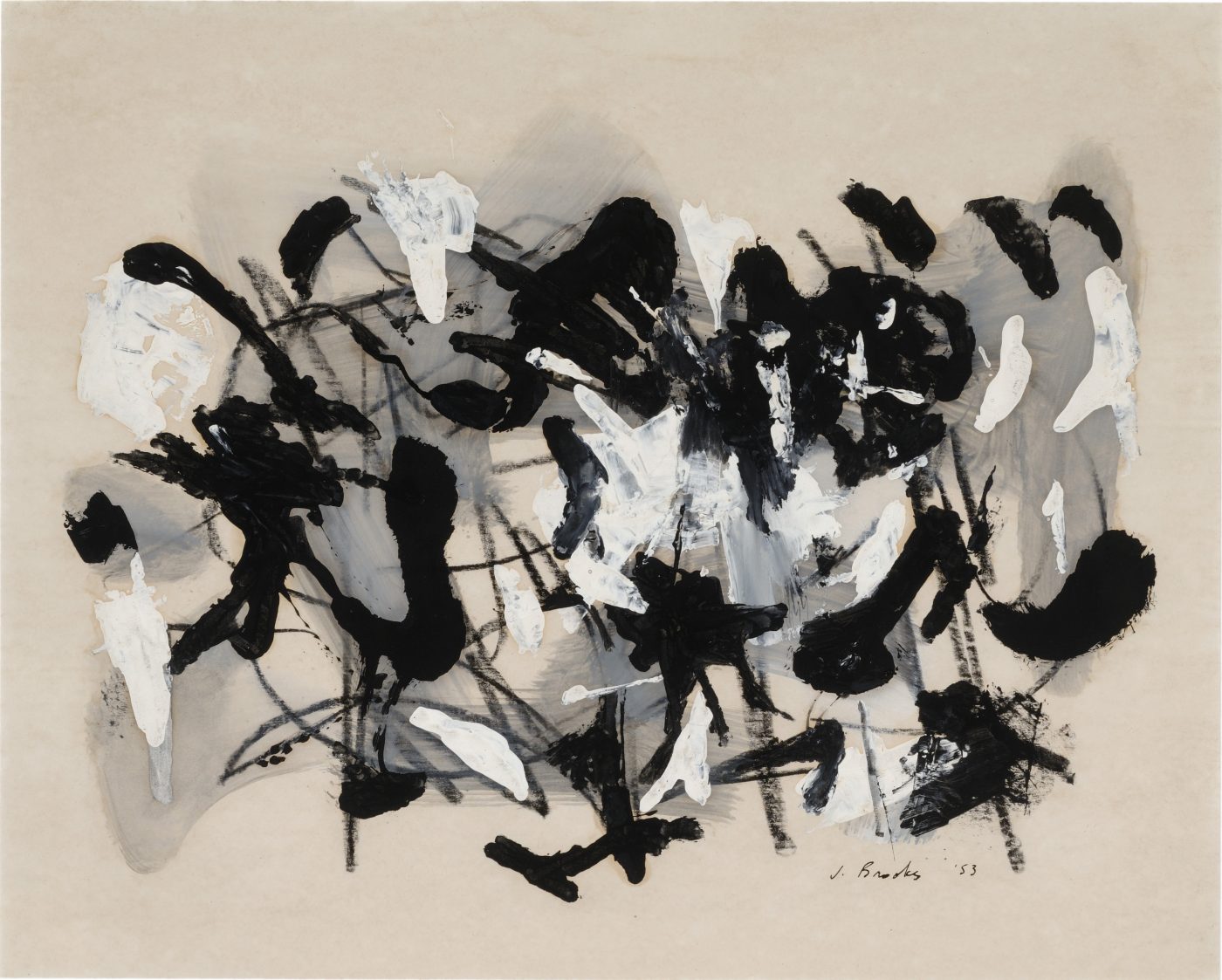James Brooks: Process of Discovery
Permanent Collection Installation
November 1, 2015–October 30, 2016
James Brooks (1906–1992) was one of the most widely celebrated painters of the 1950s New York school. Born in St. Louis, Brooks grew up in Texas and attended Southern Methodist University from 1923 to 1925, arriving in New York shortly thereafter, supporting himself as a commercial artist while studying painting at the Art Students League. In 1942 he completed Flight, a monumental mural work for the Marine Air Terminal at La Guardia airport created as part of the Federal Art Project of the WPA (Works Progress administration). after serving in Cairo during World War II, Brooks returned to New York and married the painter Charlotte Park, a 1939 graduate of the Yale School of Art. The couple followed their friends Jackson Pollock and Lee Krasner to the East End, setting up painting studios in Montauk in the late 1940s and establishing a home in Springs, East Hampton, in 1957.
Like most artists of the 1940s and 1950s who were creatively seeking a new, abstract visual language, Brooks closely studied the synthetic Cubism of Picasso and Braque, while also absorbing the lessons of the European surrealists—newly arrived in the United States from a war-torn Europe—who looked to the unconscious to trigger the flow of ideas. Like colleagues such as Pollock and Krasner, Brooks drew from the Surrealist notion of psychological states of being as fodder for painterly gesture and the acceptance of chance occurrence as a vital part of the artistic process. For Brooks, a revelation came in the late 1940s, when an accidental stain that seeped through to the back of a canvas suggested to Brooks a way to create a spontaneous pictorial image, in much the same way Pollock had freed his own style by gestural drips on canvas. Brooks later observed “I work from accidents. That’s the only thing that stimulates me to fresh form. I can’t let too much thinking interfere.”
Brooks thought of drawings as another arena for experimentation. Throughout his sixty-year career he was a prolific painter but was less frequently involved with printmaking, perhaps because of the more involved process and less immediate results. While working at the Chiron Press in New York in the early 1970s, Brooks made several lithographs. Instead of discarding one that he had worked on and rejected, he saved it and later used it as a point of departure for a series of mixed-media works he titled Variations on a Theme (1974). In each the original lithograph is transformed by a combination of collage elements and the application of gouache and ink. In one variation, the horizontal image is even reoriented to a vertical, clearly showing Brooks’s process of discovery.



